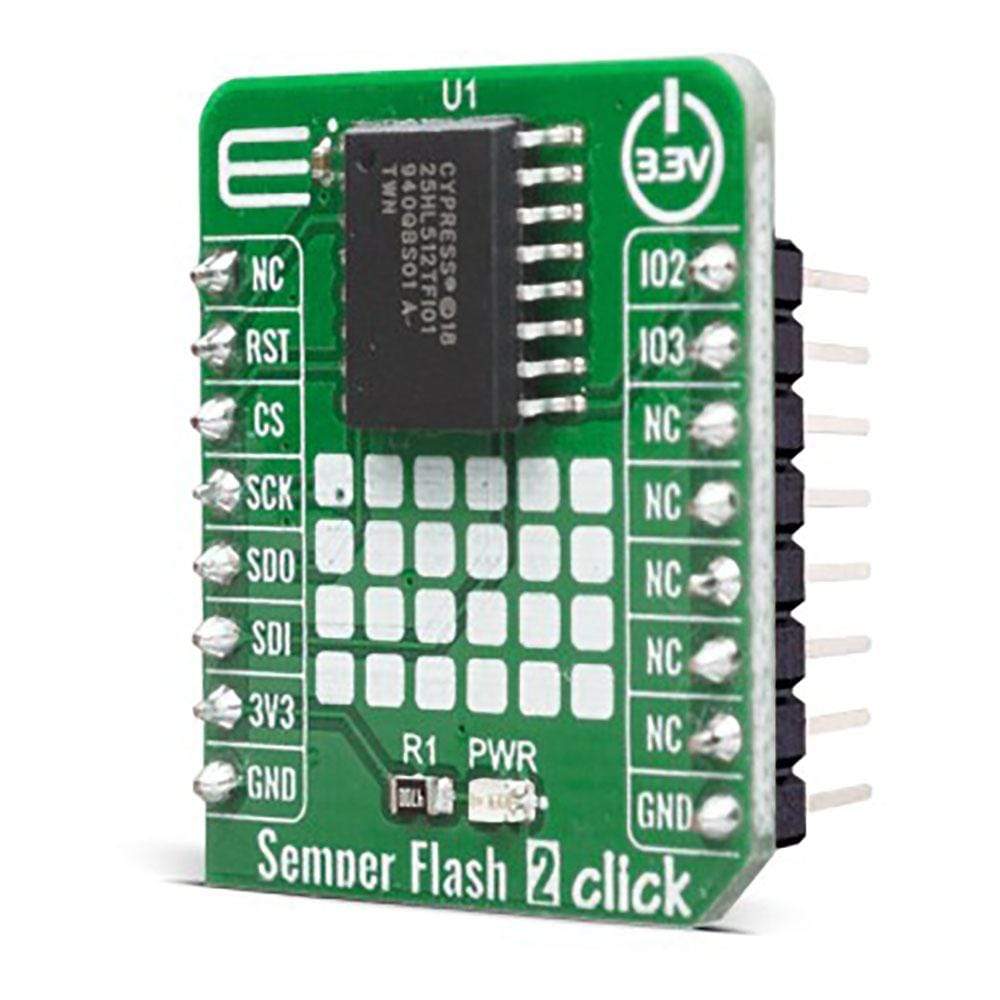
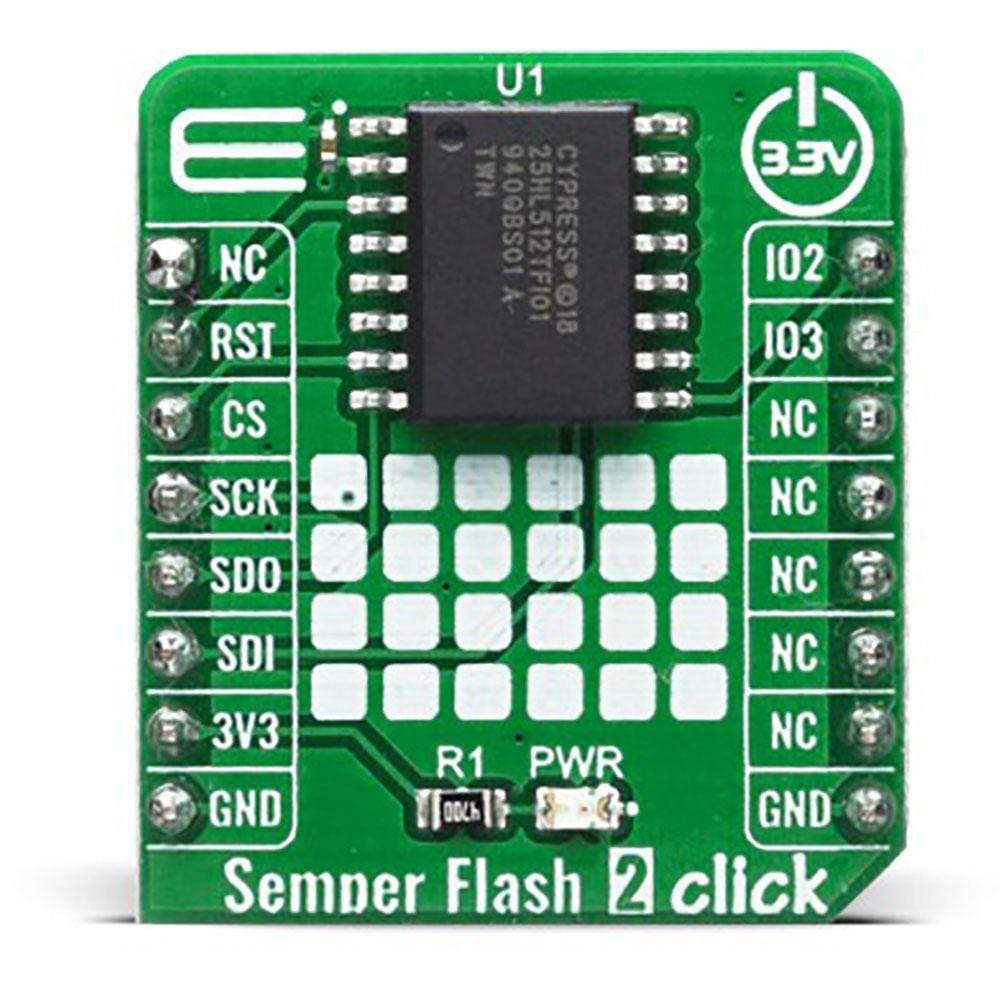
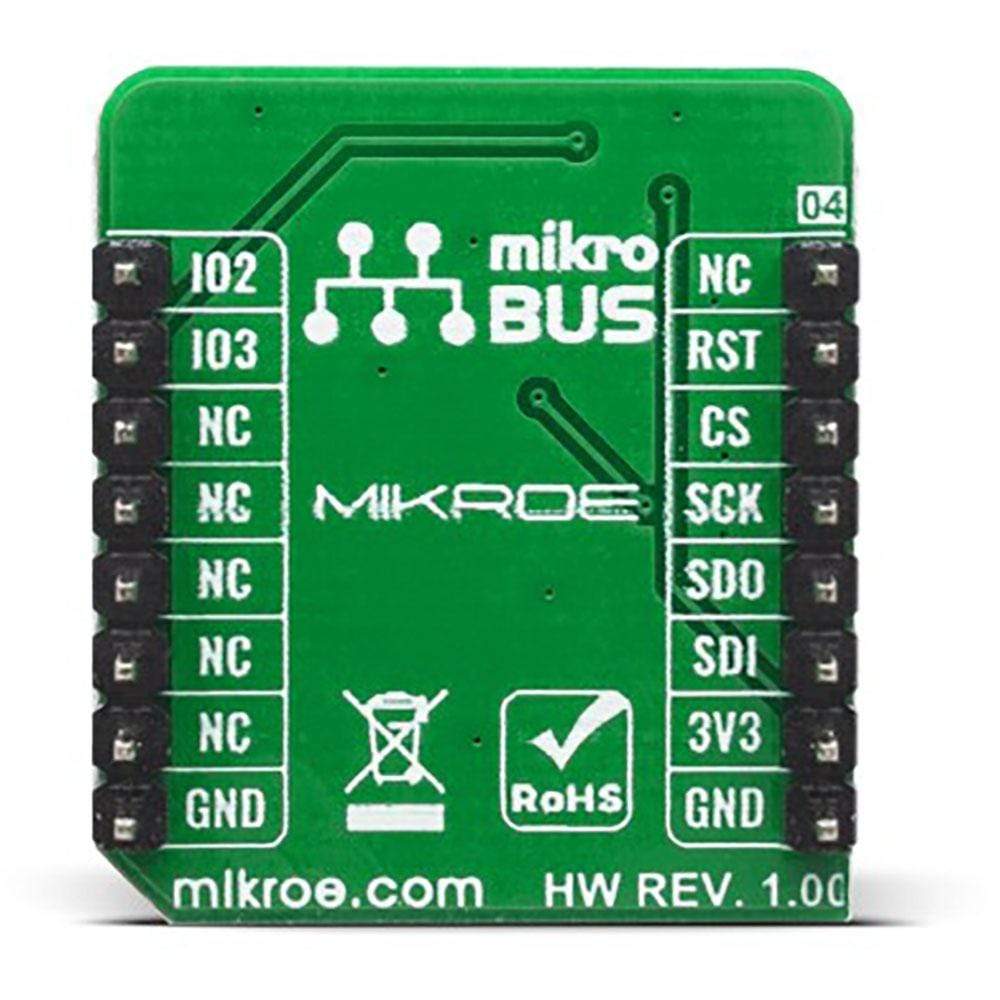
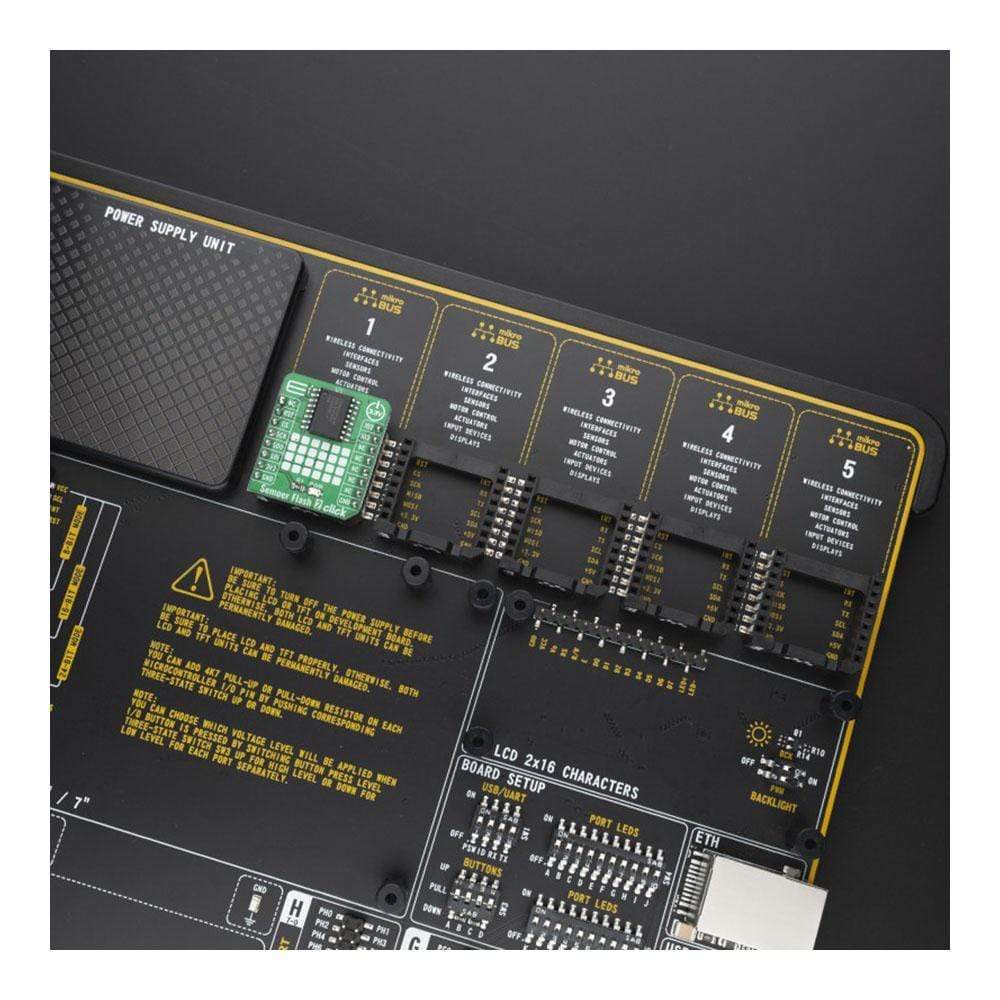
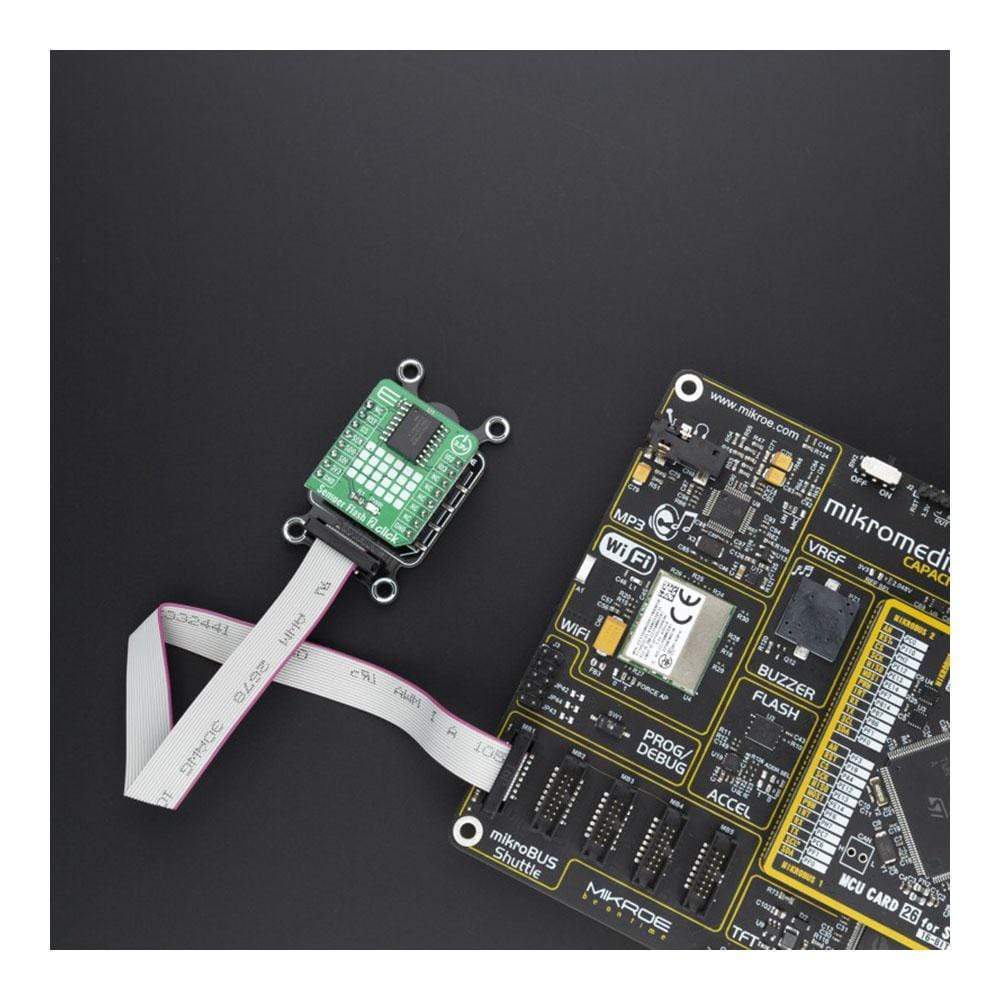
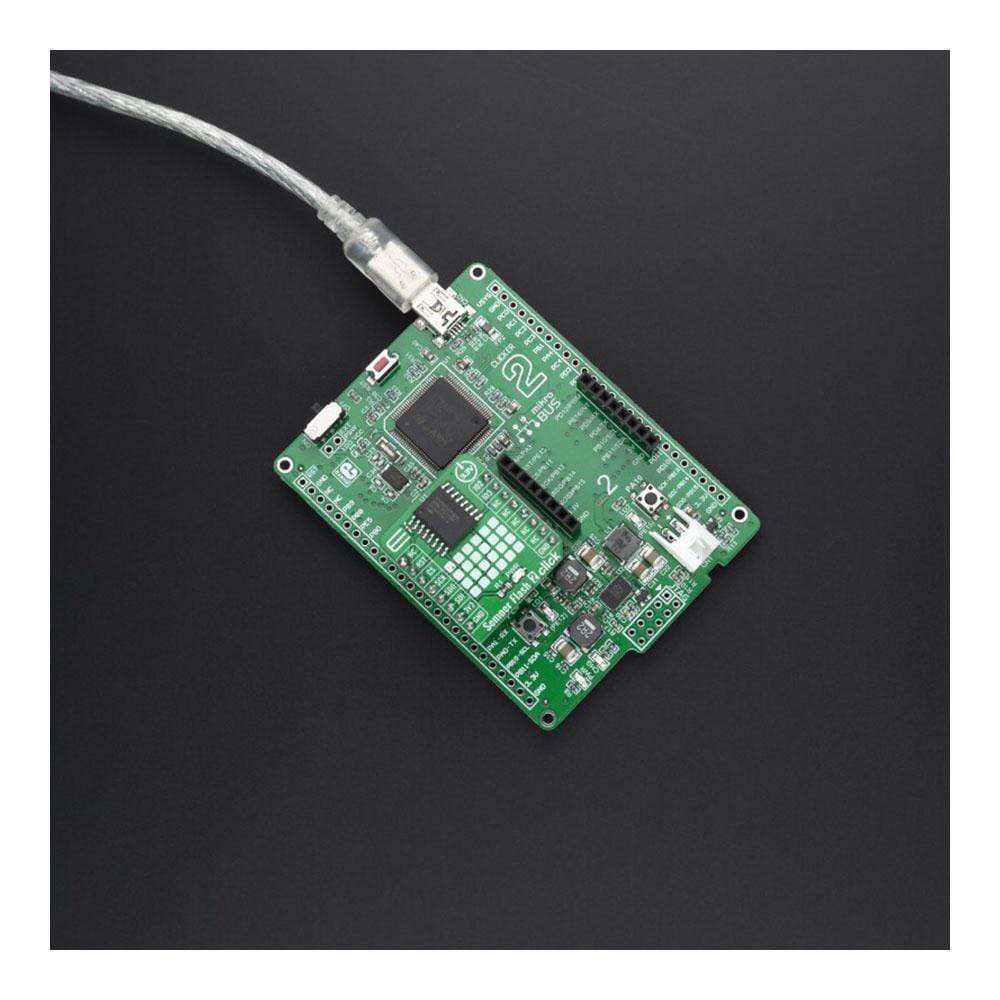
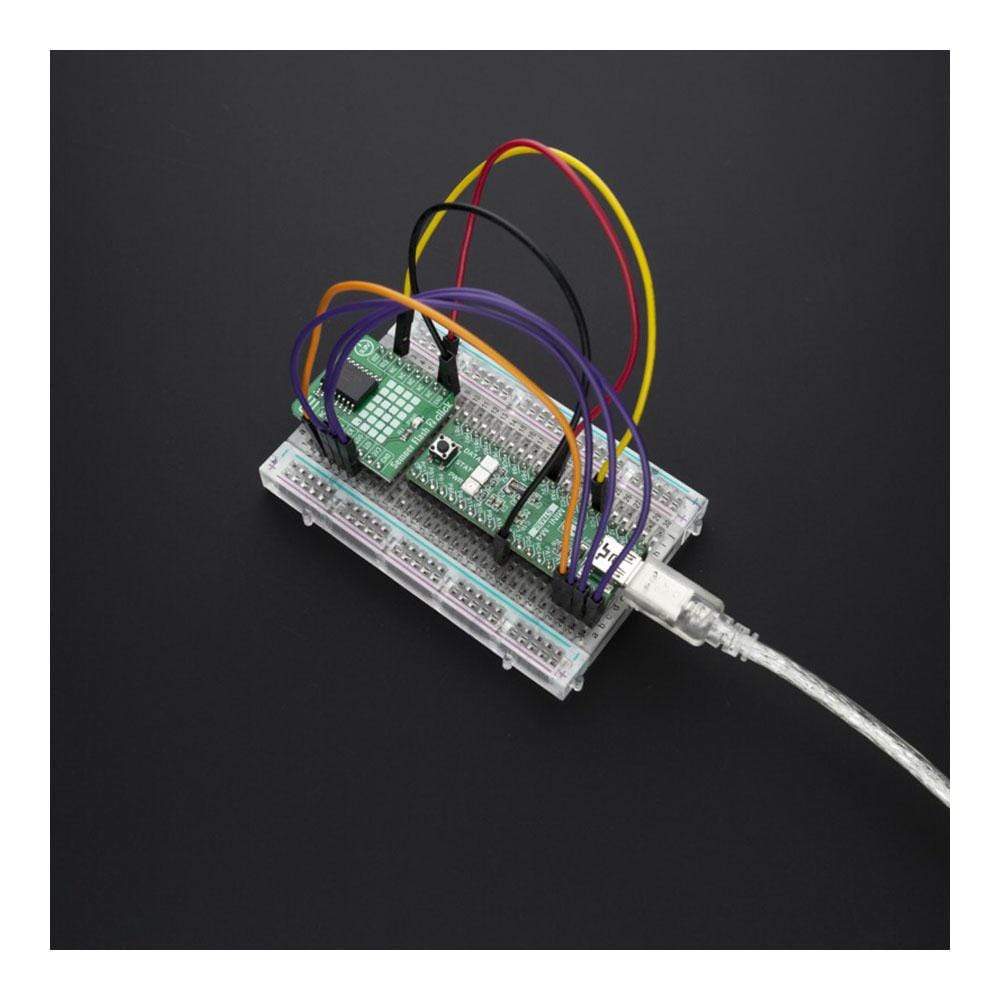
Key Features
Overview
The Semper Flash 2 Click Board™ features the S25HL512T from Cypress, a perfect solution for the mass storage option in various embedded applications. With fast performance being one of its key features, Semper Flash 2 click can also be used for code shadowing, execute-in-place (XIP), and data storage. The Cypress Semper Flash with Quad SPI family of products is high-speed CMOS, MirrorBit NOR flash devices. Semper Flash is designed for Functional Safety with development according to ISO 26262 standard to achieve ASIL-B compliance and ASIL-D readiness. The 512 Mbit SPI Flash memory module is one of the fastest and most reliable Flash modules on the market, with a 3.0V core and I/O voltage.
The Semper Flash 2 Click Board™ is supported by a mikroSDK compliant library, which includes functions that simplify software development. This Click Board™ comes as a fully tested product, ready to be used on a system equipped with the mikroBUS™ socket.
Downloads
La Semper Flash 2 Click Board™ est dotée du S25HL512T de Cypress, une solution parfaite pour l'option de stockage de masse dans diverses applications embarquées. Les performances rapides étant l'une de ses principales caractéristiques, le Semper Flash 2 Click peut également être utilisé pour le shadowing de code, l'exécution sur place (XIP) et le stockage de données. La famille de produits Cypress Semper Flash avec Quad SPI est composée de dispositifs flash CMOS haute vitesse, MirrorBit NOR. Semper Flash est conçu pour la sécurité fonctionnelle avec un développement selon la norme ISO 26262 pour atteindre la conformité ASIL-B et la préparation ASIL-D. Le module de mémoire Flash SPI 512 Mbit est l'un des modules Flash les plus rapides et les plus fiables du marché, avec un cœur de 3,0 V et une tension d'E/S.
La carte Click Board™ Semper Flash 2 est supportée par une bibliothèque compatible mikroSDK, qui comprend des fonctions qui simplifient le développement logiciel. Cette carte Click Board™ est un produit entièrement testé, prêt à être utilisé sur un système équipé du socket mikroBUS™.
| General Information | |
|---|---|
Part Number (SKU) |
MIKROE-4028
|
Manufacturer |
|
| Physical and Mechanical | |
Weight |
0.018 kg
|
| Other | |
Country of Origin |
|
HS Code Customs Tariff code
|
|
EAN |
8606018718153
|
Warranty |
|
Frequently Asked Questions
Have a Question?
Be the first to ask a question about this.







